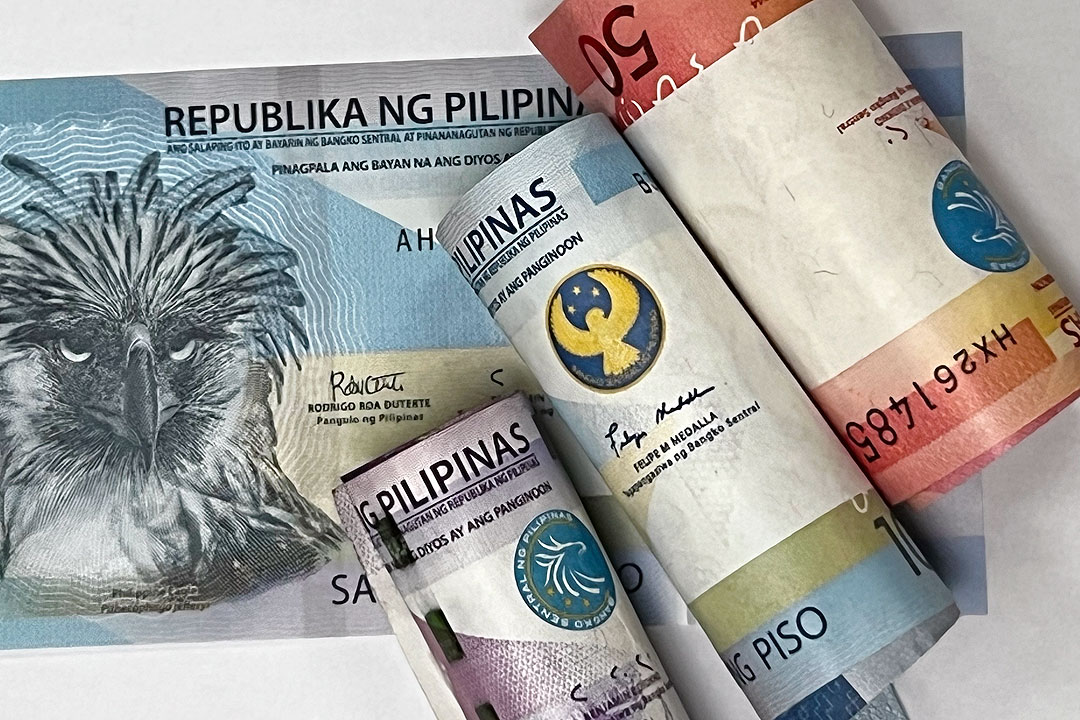 BW FILE PHOTO
BW FILE PHOTOTHE PESO continued to strengthen against the dollar on Tuesday, rising for the sixth consecutive session, as oil prices continued to decline and with markets awaiting the fate of US President Donald J. Trump’s tax bill.
The local unit closed at P56.30 per dollar, climbing by three centavos from its P56.33 finish on Monday, Bankers Association of the Philippines data showed.
The peso opened Tuesday’s session stronger at P56.25 against the dollar. It climbed to as high as P56.145, while its intraday low was at P56.369 versus the greenback.
Dollars traded went up to $1.97 billion on Tuesday from $1.82 billion on Monday.
“The dollar-peso closed a tad lower due to renewed optimism of trade deals and concerns over the US debt crisis,” a trader said in a phone interview.
The peso was also supported by continued optimism over the ceasefire between Iran and Israel, which has led to lower global oil prices, Rizal Commercial Banking Corp. Chief Economist Michael L. Ricafort said in a Viber message.
This would support further rate cuts by the Bangko Sentral ng Pilipinas (BSP) as inflation likely remained below the 2-4% target range, even as it likely picked up slightly last month as fuel costs spiked due to the 12-day conflict in the Middle East, he said.
A BusinessWorld poll of 17 analysts yielded a median estimate of 1.5% for June headline inflation, up from the 1.3% in May but still below the BSP’s target.
If realized, this would be the fastest print in three months or since 1.8% in March but would be slower than the 3.7% print in June 2024. This is also within the BSP’s June estimate of 1.1% to 1.9%.
For Wednesday, the trader expects the peso to move between P56.20 and P56.50 per dollar, while Mr. Ricafort sees it ranging from P56.15 to P56.40.
The US dollar weakened on Tuesday, falling the most against the Japanese yen and the Swiss franc, as Mr. Trump’s massive tax-cut and spending bill stoked fiscal worries and uncertainty around trade deals weighed on sentiment, Reuters reported.
Investors have also started wagering on a quicker pace of monetary policy easing by the Federal Reserve this year ahead of a slew of US economic data this week, headlined by Thursday’s nonfarm payrolls report.
That spurred dollar selling, which slipped 0.33% to a new 10-year low and fetched 0.790 Swiss francs, while the greenback dropped 0.64% to 143.08 Japanese yen. The yen capped the first half of the year with a 9% gain — its strongest performance since 2016.
The euro was perched at a near four-year high of $1.1781. The single currency surged 13.8% in the January-June period, its strongest-ever first-half performance, LSEG data showed.
Sterling inched up 0.2% to $1.3757, not far from the three-and-a-half-year high it touched last week, while the dollar index, which measures the US currency against six others, slipped to 96.698, its lowest since February 2022.
Goldman Sachs now expects the Fed to deliver three quarter-point interest rate cuts this year compared with its earlier forecast of a single reduction in December, citing muted tariff effects and labor market weakness.
Investors are also grappling with uncertainty over the US Senate’s efforts to pass Mr. Trump’s budget bill, which faces internal party divisions over its projected $3.3 trillion addition to the national debt. The fiscal concerns have dampened sentiment and prompted some investors to diversify.
The world’s reserve currency is down more than 10% this year, its biggest first-half dive since the era of free-floating currencies began in the early 1970s.
Meanwhile, Mr. Trump has continued hammering the Fed to ease monetary policy, sending Fed Chair Jerome H. Powell a list of central bank interest rates around the world adorned with handwritten commentary saying the US rate should be between Japan’s 0.5% and Denmark’s 1.75%. — A.M.C. Sy with Reuters

 6 days ago
1
6 days ago
1
















 English (US) ·
English (US) ·